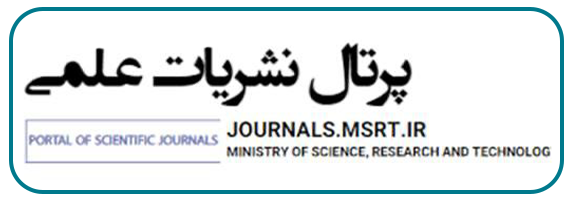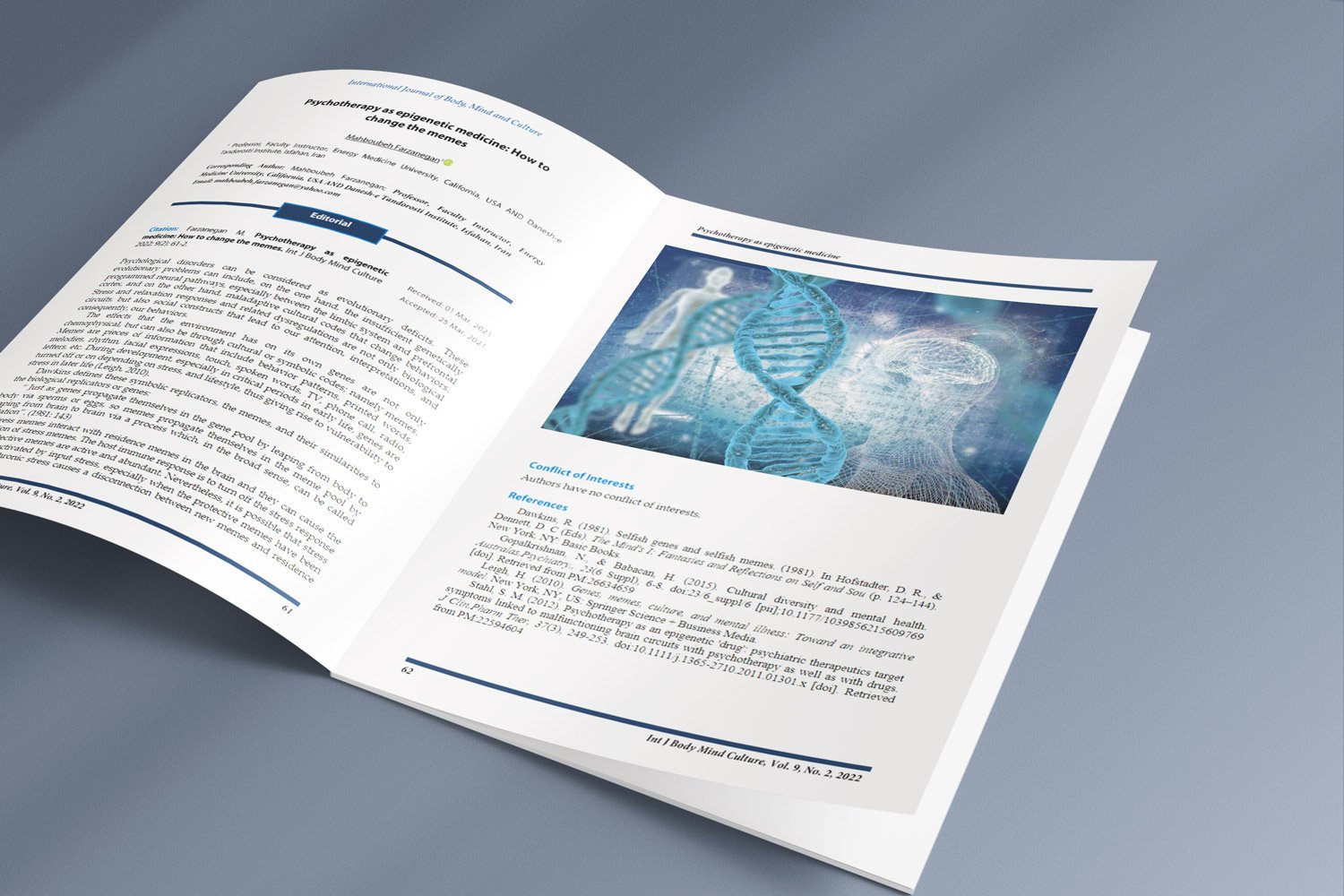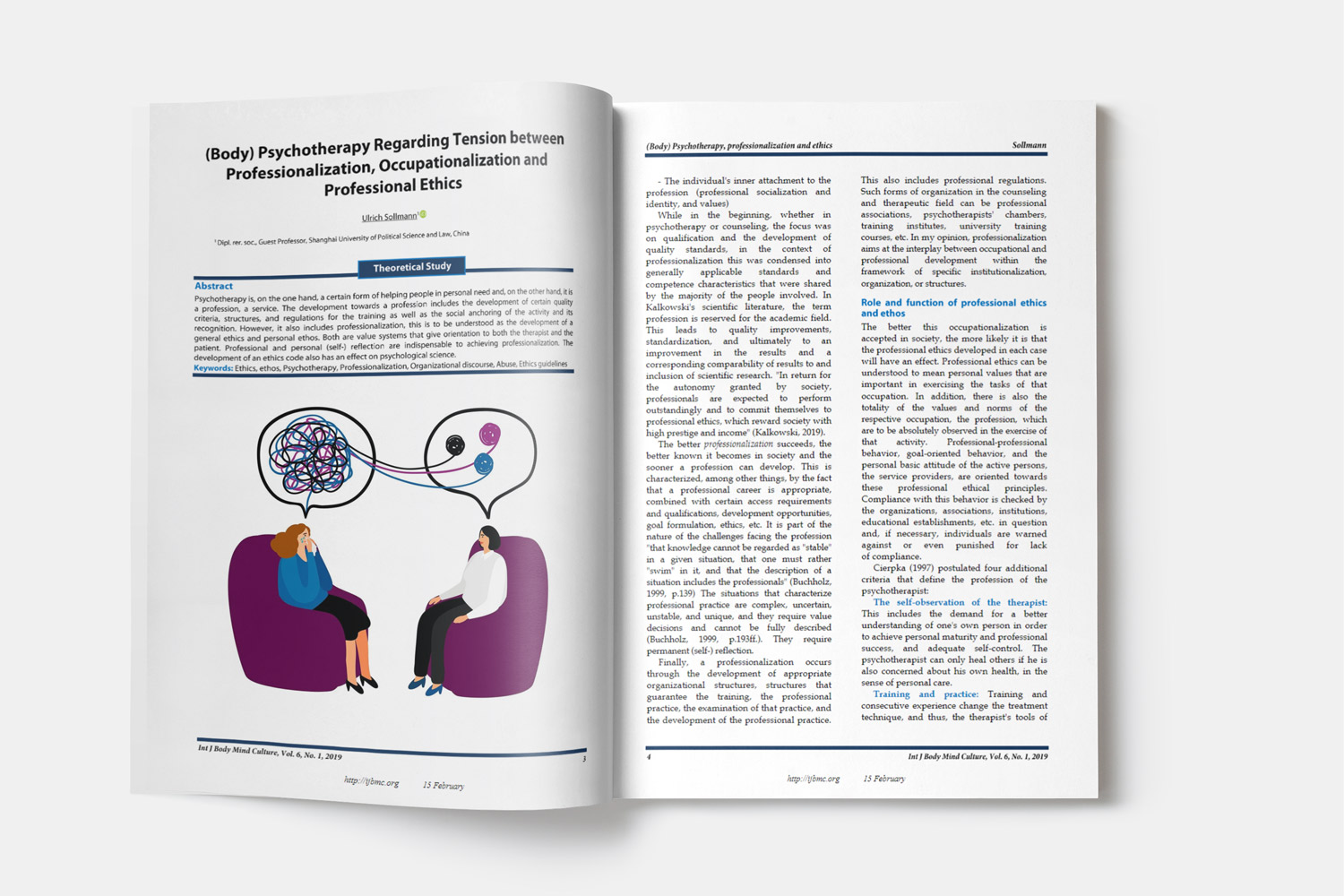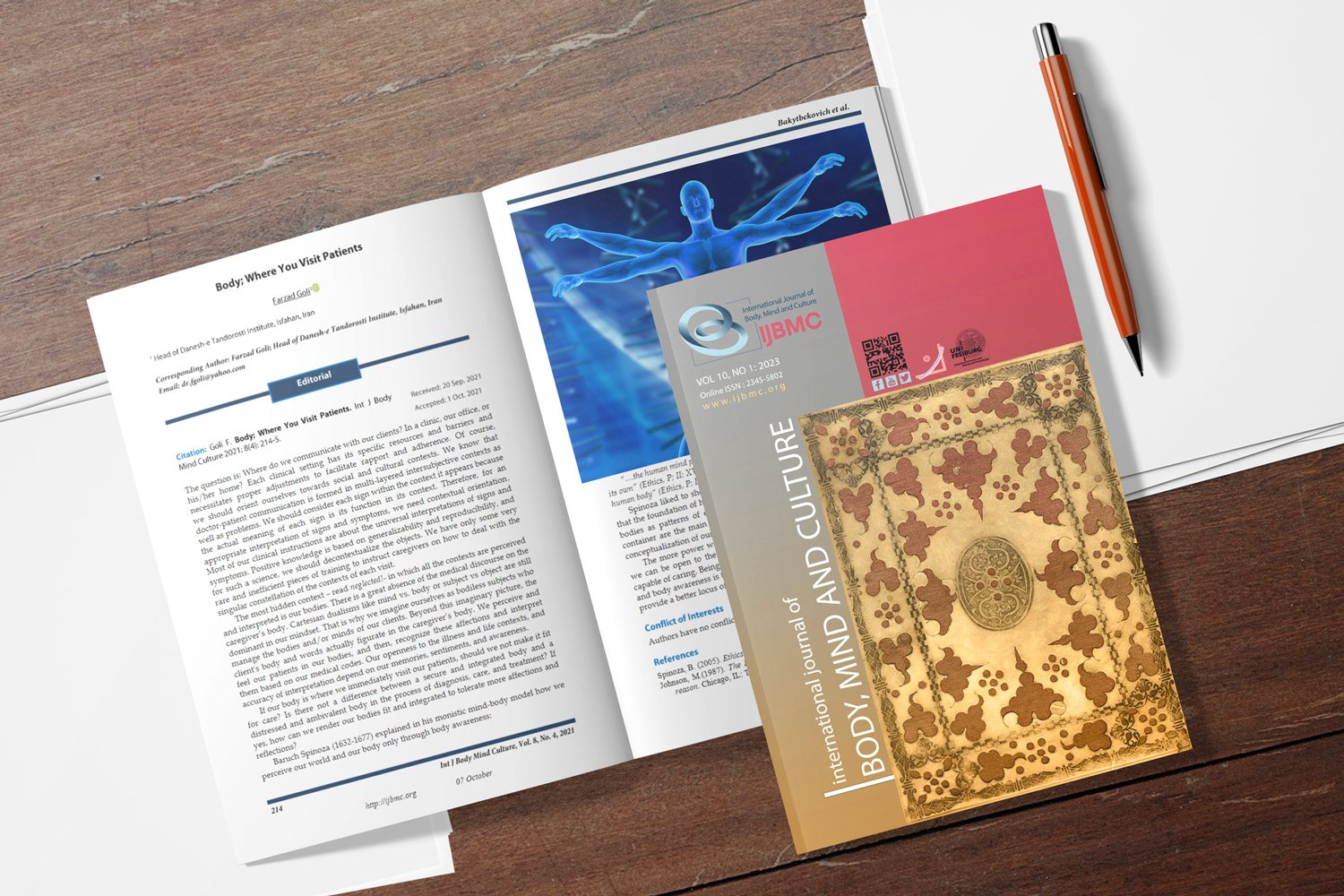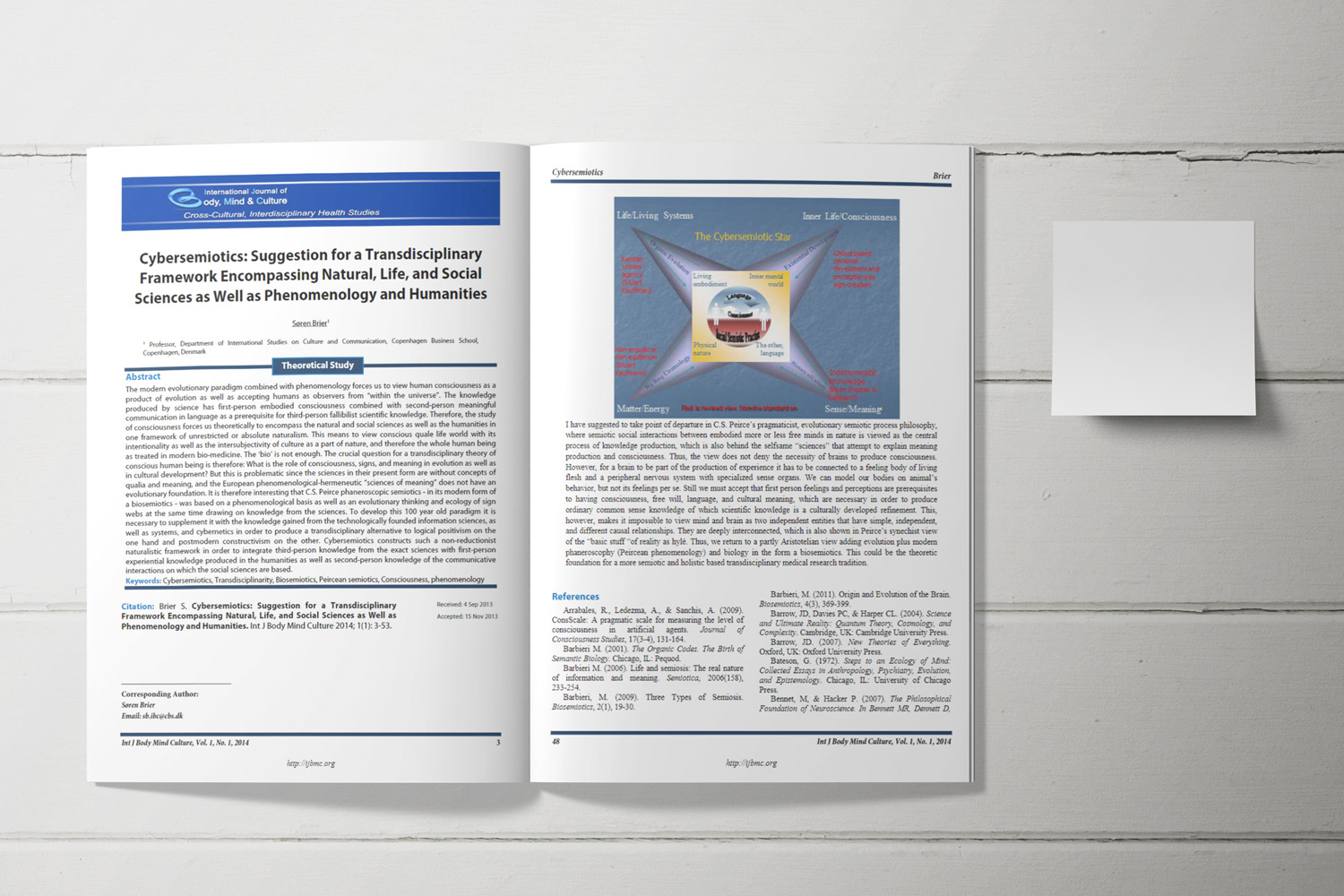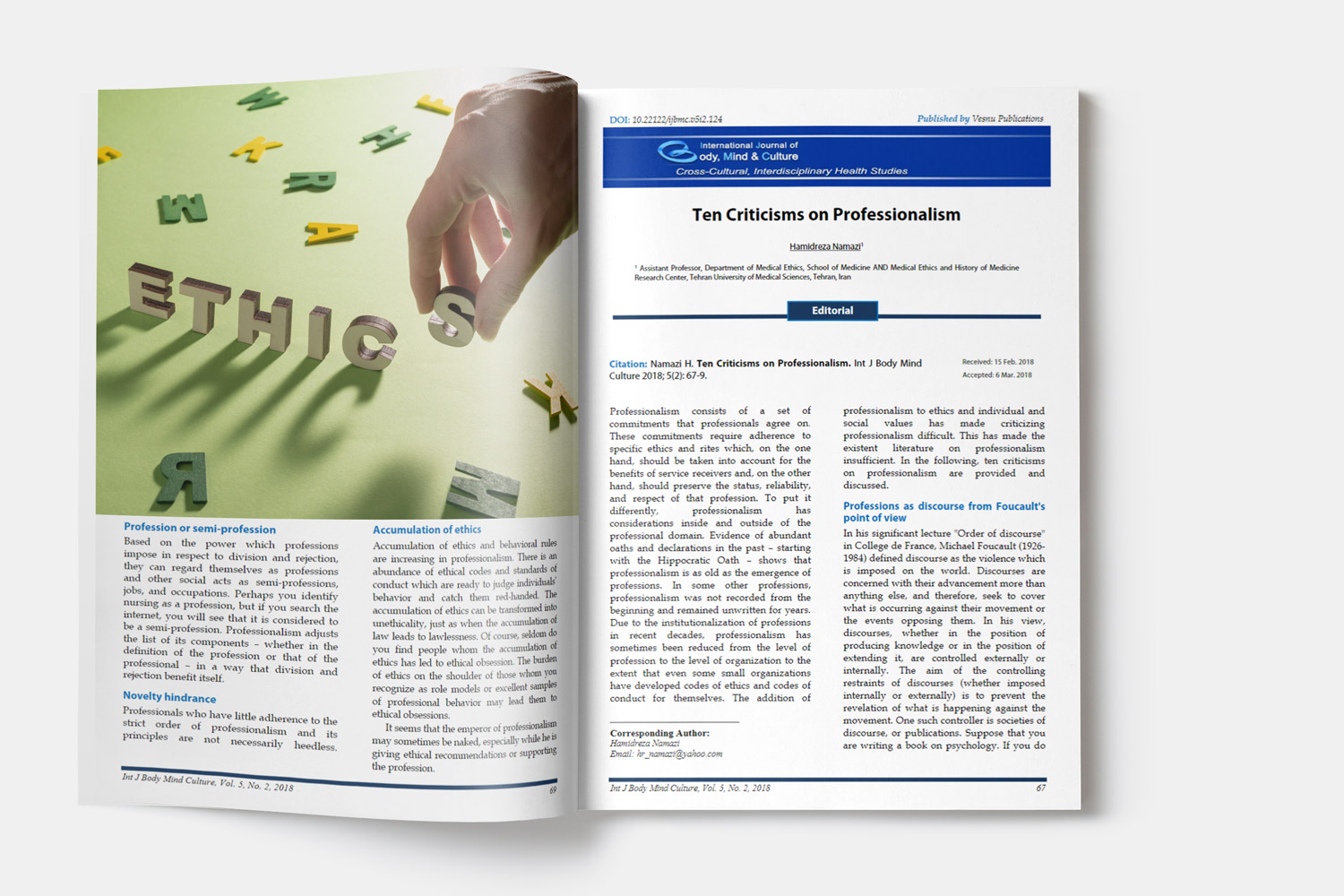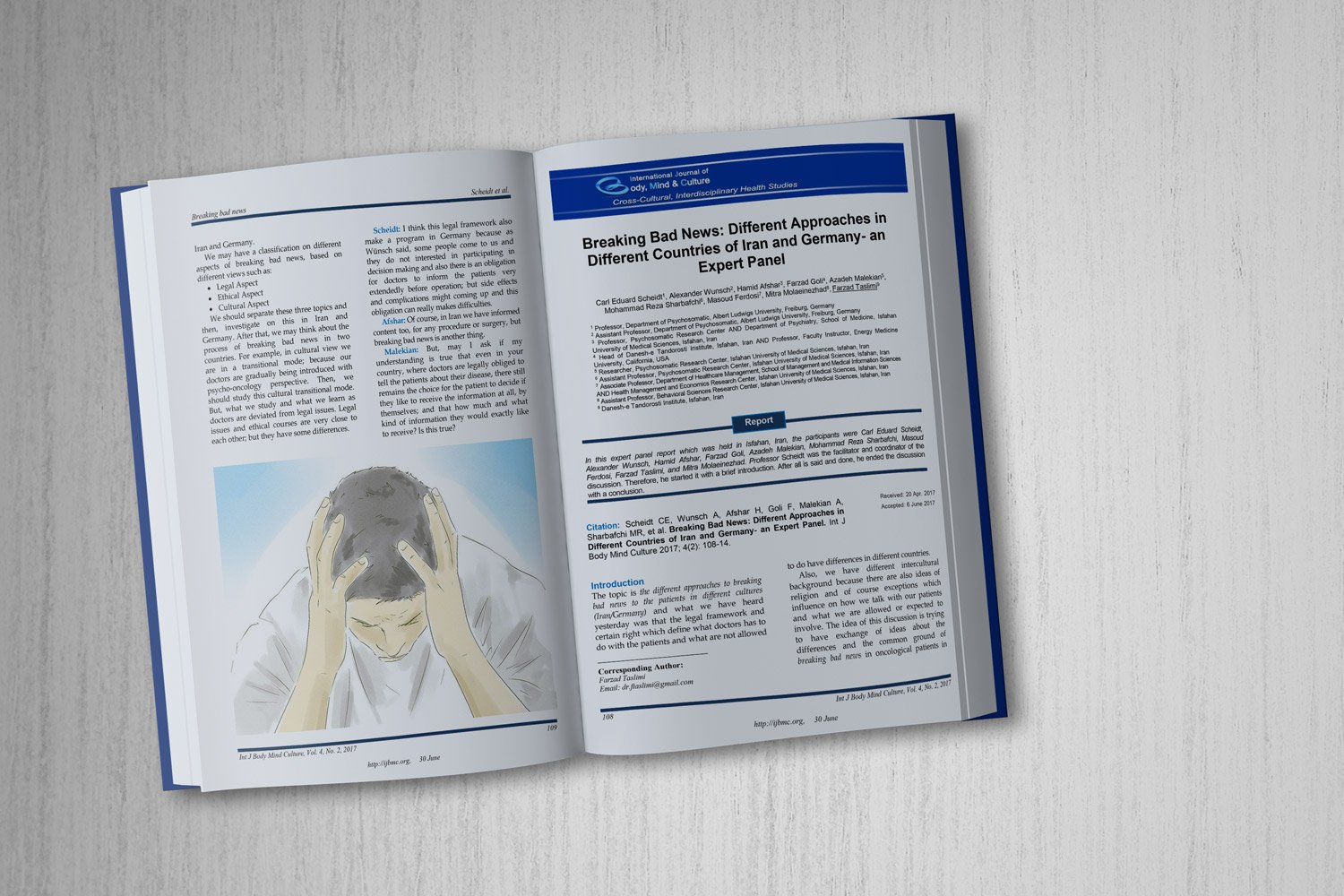Effectiveness of Mentalization-Based Training on Emotion Regulation and Aggression in Adolescents
Downloads
Objective: This study aimed to evaluate the effectiveness of a mentalization-based intervention in improving emotion regulation and reducing aggression among adolescent boys and girls.
Methods and Materials: A quasi-experimental pretest-posttest control group design with a 3-month follow-up was implemented. A total of 60 first-year secondary school students (30 boys and 30 girls), aged 13 to 15, were selected via cluster random sampling in Arak, Iran. Participants were randomly assigned to an experimental group (received eight sessions of mentalization training) and a control group. Emotion regulation was assessed using the Emotion Regulation Questionnaire for Children and Adolescents (ERQ-CA), and aggression was measured using the Buss and Perry Aggression Questionnaire. Data were analyzed using repeated measures ANOVA in SPSS v27.
Findings: Mentalization training significantly increased cognitive reappraisal and decreased emotional suppression and all subtypes of aggression (physical, verbal, anger, and hostility) in the experimental group (p < 0.05). These effects were sustained at the 3-month follow-up. Gender differences were found only in suppression and verbal aggression, with boys scoring higher. The interaction effect of group and gender was significant for suppression and some aggression subtypes.
Conclusion: Mentalization training is an effective intervention for enhancing emotion regulation and reducing aggressive behaviors in adolescents. It shows promise for implementation in school-based psychological services. The findings also highlight gender-specific patterns in emotional and behavioral outcomes, suggesting a need for tailored interventions.
Downloads
Ahmadi, M., Soltan Hosseini, S., Mousavi, S. M. H. (2023). The effect of mentalization intervention on reducing students' irritability and aggression. Fifth International Conference on Psychology, Educational Sciences and Social Studies, hamadan. [Persian]. https://civilica.com/doc/1647862.
Archer, J., & Coyne, S. M. (2005). An integrated review of indirect, relational, and social aggression. Personality and social psychology review, 9(3), 212-230. https://doi.org/10.1207/s15327957pspr0903_2.
Basharpoor, S., & Einy, S. (2020). The effectiveness of mentalization-based therapy on emotional dysregulation and impulsivity in veterans with post-traumatic stress disorder. The Neuroscience Journal of Shefaye Khatam, 8(3), 10-19. [Persian]. http://shefayekhatam.ir/article-۱-۲۱۱۷-fa.html.
Bateman, A., & Fonagy, P. (1999). Effectiveness of partial hospitalization in the treatment of borderline personality disorder: A randomized controlled trial. American Journal of Psychiatry, 156(10), 1563–1569. https://doi.org/10.1176/ajp.156.10.1563.
Bateman, A., & Fonagy, P. (2008). Comorbid antisocial and borderline personality disorders: mentalization‐based treatment. Journal of clinical psychology, 64(2), 181-194. https://doi.org/10.1002/jclp.20451.
Bateman, A., & Fonagy, P. (2010). Mentalization based treatment for borderline personality disorder. World psychiatry: official journal of the World Psychiatric Association (WPA), 9(1), 11–15. https://doi.org/10.1002/j.2051-5545.2010.tb00255.x.
Bjureberg, J., Ojala, O., Hesser, H., Häbel, H., Sahlin, H., Gratz, K. L., ... & Hellner, C. (2023). Effect of internet-delivered emotion regulation individual therapy for adolescents with nonsuicidal self-injury disorder: A randomized clinical trial. JAMA network open, 6(7), e2322069-e2322069. http://doi.org/10.1001/jamanetworkopen.2023.22069.
Blos, P. (1962). On adolescence: A psychoanalytic interpretation (1st pbk. ed.). Free Press.
Bounoua, N., Spielberg, J. M., & Sadeh, N. (2022). Clarifying the synergistic effects of emotion dysregulation and inhibitory control on physical aggression. Human Brain Mapping, 43(17), 5358-5369. https://doi.org/10.1002/hbm.26012.
Buss, A. H., & Perry, M. (1992). The Aggression Questionnaire. Journal of Personality and Social Psychology, 33, 451-459. http://doi.org/10.1037/0022-3514.63.3.452.
Chandler, A. B., & Lawrence, E. (2022). Covariations among attachment, attributions, self-esteem, and psychological aggression in early marriage. Journal of family psychology, 36(1), 46. https://doi.org/10.1037/fam0000842.
Chaplin, T. M., & Aldao, A. (2013). Gender differences in emotion expression in children: a meta-analytic review. Psychological bulletin, 139(4), 735. https://doi.org/10.1037/a0030737.
Cracco, E., Goossens, L., & Braet, C. (2017). Emotion regulation across childhood and adolescence: evidence for a maladaptive shift in adolescence. European child & adolescent psychiatry, 26, 909-921. https://doi.org/10.1007/s00787-017-0952-8.
Cserép, M., Szabó, B., Tóth-Heyn, P., Szabo, A. J., & Szumska, I. (2022). The Predictive Role of Cognitive Emotion Regulation of Adolescents with Chronic Disease and Their Parents in Adolescents’ Quality of Life: A Pilot Study. International Journal of Environmental Research and Public Health, 19(23), 16077. https://doi.org/10.3390/ijerph192316077.
Darabi, M., Manavipour, D., Mohammadi, A. (2022). The effectiveness of the Metallization -based program (mother and child) in children's behavioral problems. journal of Adolescent and Youth Psychological Studies, 3 (1), 303-314. [Persian]. http://doi.org/10.52547/jspnay.3.1.303
De Berardis, D., Fornaro, M., Orsolini, L., Ventriglio, A., Vellante, F., & Di Giannantonio, M. (2020). Emotional Dysregulation in Adolescents: Implications for the Development of Severe Psychiatric Disorders, Substance Abuse, and Suicidal Ideation and Behaviors. Brain sciences, 10(9), 591. https://doi.org/10.3390/brainsci10090591.
Edwards, P., van de Mortel, T., & Stevens, J. (2019). Perceptions of anger and aggression in rural adolescent Australian males. International journal of mental health nursing, 28(1), 162-170. https://doi.org/10.1111/inm.12513.
Fonagy, P., Gergely, G., Jurist, E. L., & Target, M. (2018). Affect regulation, Metallization, and the development of the self. Routledge. https://doi.org/10.4324/9780429471643
Garofalo, C., Neumann, C. S., & Velotti, P. (2021). Psychopathy and aggression: The role of emotion dysregulation. Journal of Interpersonal Violence, 36(23-24), NP12640-NP12664. https://doi.org/10.1177/088626051990094.
Ghaffari Cherati, M., Mohammadi Pour, M., & Azizi, A. (2023). Effectiveness of Mentalization Based Therapy on The Difficulty of Emotional Regulation and Aggression of Depressed Female Adolescents. Journal of Modern Psychological Researches, 18(71), 169-178. [Persian]. http://doi.org/10.22034/jmpr.2023.54765.5349.
Griffin, E., & McMahon, E. (2020). Adolescent mental health: Global data informing opportunities for prevention. EClinicalMedicine, 24. https://doi.org/10.1016/j.eclinm.2020.100413.
Gross, J. J. (1998). Antecedent-and response-focused emotion regulation: divergent consequences for experience, expression, and physiology. Journal of personality and social psychology, 74(1), 224.
Gross, J. J., & Jazaieri, H. (2014). Emotion, emotion regulation, and psychopathology: An affective science perspective. Clinical psychological science, 2(4), 387-401. https://doi.org/10.1177/2167702614536164.
Gross, J. J., & John, O. P. (2003). Individual differences in two emotion regulation processes: Implications for affect, relationships, and wellbeing. Journal of Personality and Social Psychology, 85, 348 –362. https://doi.org/10.1037/0022-3514.85.2.348.
Gudarzi, T., & Cervin, M. (2024). Emotion dysregulation and psychological inflexibility in adolescents: Discriminant validity and associations with internalizing symptoms and functional impairment. Journal of Contextual Behavioral Science, 34, 100847. https://doi.org/10.1016/j.jcbs.2024.100847.
Gullone, E., & Taffe, J. (2012). The emotion regulation questionnaire for children and adolescents (ERQ–CA): a psychometric evaluation. Psychological assessment, 24(2), 409. https://doi.org/10.1037/a0025777.
Hofmann, S. G., & Hay, A. C. (2018). Rethinking avoidance: Toward a balanced approach to avoidance in treating anxiety disorders. Journal of anxiety disorders, 55, 14-21. https://doi.org/10.1016/j.janxdis.2018.03.004.
Jandrić, S., Kovač, V., Kovač, D., & Degmecic, D. (2023). Self-regulation and rumination as a transdiagnostic factors for internalizing and externalizing disorders among adolescents. Clinical Neuropsychiatry, 20(5), 415. https://doi.org/10.36131/cnfioritieditore20230503.
Kalvin, C., Zhong, J., Rutten, M., Ibrahim, K., & Sukhodolsky, D. G. (2024). Evidence-based psychosocial treatments for childhood irritability and aggressive behavior. JAACAP Open. https://doi.org/10.1016/j.jaacop.2024.01.009.
Karimi, F., Farahbakhsh, K., Salimi Bajestani, H., & Moatamedi, A. (2020). The Effectiveness of Mentalization Based Therapy (MBT-A) on Increasing the Quality of Family Relationships and Reducing Self harm in Adolescent Girls. Journal of Sabzevar University of Medical Sciences, 27(2), 257-265. [Persian]. https://jsums.medsab.ac.ir/article_1295.html.
Kökönyei, G., Kovács, L. N., Szabó, J., & Urbán, R. (2024). Emotion regulation predicts depressive symptoms in adolescents: A prospective study. Journal of youth and adolescence, 53(1), 142-158. https://doi.org/10.1007/s10964-023-01894-4.
Lieb, K., & Stoffers-Winterling, J. (2020). The new S3 guidelines: Borderline personality disorder. Psychotherapy Forum, 24(3–4), 87–88.
Lotfi, M., Bahrampouri, L., Amini, M., Fatemitabar, R., Birashk, B., Entezari, M., & Shiasi, Y. (2019). Persian adaptation of emotion regulation questionnaire for children and adolescents (ERQ-CA). Journal of Mazandaran University of Medical Sciences, 29(175), 117-128. [Persian]. http://jmums.mazums.ac.ir/article-1-12374-fa.html.
Medeiros, G. C., Seger-Jacob, L., Garreto, A. K., Kim, H. S., Coccaro, E. F., & Tavares, H. (2019). Aggression directed towards others vs. aggression directed towards the self: clinical differences between intermittent explosive disorder and nonsuicidal self-injury. Brazilian Journal of Psychiatry, 41, 303-309. https://doi.org/10.1590/1516-4446-2018-0149.
Midgley, N., Mortimer, R., Carter, M., Casey, P., Coffman, L., Edbrooke-Childs, J., ... & McFarquhar, T. (2023). Emotion regulation in children (ERiC): A protocol for a randomised clinical trial to evaluate the clinical and cost effectiveness of Mentalization Based Treatment (MBT) vs Treatment as Usual for school-age children with mixed emotional and behavioural difficulties. Plos one, 18(8), e0289503. https://doi.org/10.1371/journal.pone.0289503.
Mikulincer, M., & Shaver, P. R. (2019). Attachment orientations and emotion regulation. Current opinion in psychology, 25, 6-10. http://doi.org/10.1016/j.copsyc.2018.02.006.
Mohajerin, B., & Howard, R. C. (2024). Effects of two treatments on interpersonal, affective, and lifestyle features of psychopathy and emotion dysregulation. Personality and Mental Health, 18(1), 43-59. https://doi.org/10.1002/pmh.1593.
Oestergaard Hagelquist, J. (2023). A Guide to Mentalization. Translated by Seyyed Mohammad Hossein Mousavi; Mahnaz Ahmadi; Mehrnoush Ghanbarian. Tehran: Arjomand. [Persian].
Reichl, C., & Kaess, M. (2021). Self-harm in the context of borderline personality disorder. Current Opinion in Psychology, 37, 139–144. https://doi.org/10.1016/j.copsyc.2020.12.007.
Robin, M., Surjous, L., Belbèze, J., Bonnardel, L., Lamas, C., Silva, J., ... & Corcos, M. (2023). Four attachment-based categories of emotion regulation in adolescent psychic troubles. Frontiers in Psychology, 14, 1133980. https://doi.org/10.3389/fpsyg.2023.1133980.
Saccaro, L. F., Giff, A., De Rossi, M. M., & Piguet, C. (2024). Interventions targeting emotion regulation: An umbrella systematic review. Journal of Psychiatric Research, 174, 263-274. https://doi.org/10.1016/j.jpsychires.2024.04.025
Samani, S. (2008). Study of Reliability and Validity of the Buss and Perry's Aggression Questionnaire. IJPCP, 13 (4), 359-365. [Persian]. http://ijpcp.iums.ac.ir/article-1-356-fa.html.
Sharma, P., Sen, M. S., Sinha, U. K., & Kumar, D. (2024). Childhood Trauma, Emotional Regulation, Alexithymia, and Psychological Symptoms Among Adolescents: A Mediational Analysis. Indian Journal of Psychological Medicine, 02537176241258251. https://doi.org/10.1177/02537176241258251.
Stoffers-Winterling, J. M., Storebø, O. J., Kongerslev, M. T., Faltinsen, E., Todorovac, A., Sedoc Jørgensen, M., Sales, C. P., Edemann Callesen, H., Pereira Ribeiro, J., Völlm, B. A., Lieb, K., & Simonsen, E. (2022). Psychotherapies for borderline personality disorder: A focused systematic review and meta-analysis. The British Journal of Psychiatry, 221(3), 538–552. https://doi.org/10.1192/bjp.2021.204.
Sturmey, P. (Ed.). (2017). The Wiley handbook of violence and aggression. John Wiley & Sons Limited.
Taubner, S., Hauschild, S., Kasper, L., Kaess, M., Sobanski, E., Gablonski, T. C., ... & Volkert, J. (2021). Mentalization-based treatment for adolescents with conduct disorder (MBT-CD): protocol of a feasibility and pilot study. Pilot and feasibility studies, 7(1), 139. https://doi.org/10.1186/s40814-021-00876-2.
Waller, R., Hyde, L. W., Klump, K. L., & Burt, S. A. (2018). Parenting is an environmental predictor of callous-unemotional traits and aggression: A monozygotic twin differences study. Journal of the American Academy of Child & Adolescent Psychiatry, 57(12), 955-963. https://doi.org/10.1016/j.jaac.2018.07.882.
Worth, M. R., Smith, S. W., & Poling, D. V. (2021). Students with Emotional and Behavioral Disorders and Verbal Aggression: Why School Professionals Should Care and What They Can Do. Beyond Behavior, 30(3), 135-147. https://doi.org/10.1177/107429562110214.
Zsigo, C., Sfärlea, A., Lingl, C., Piechaczek, C., Schulte-Körne, G., Feldmann, L., & Greimel, E. (2023). Emotion regulation deficits in adolescent girls with major depression, anorexia nervosa and comorbid major depression and anorexia nervosa. Child Psychiatry & Human Development, 54(5), 1476-1488. https://doi.org/10.1007/s10578-022-01353-4
Copyright (c) 2025 International Journal of Body, Mind and Culture

This work is licensed under a Creative Commons Attribution-NonCommercial 4.0 International License.






